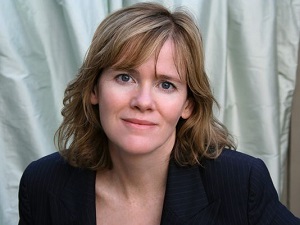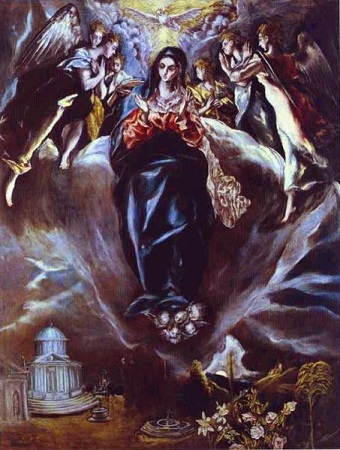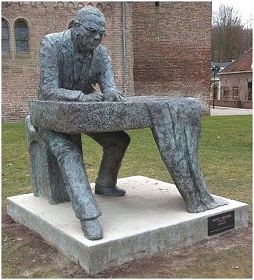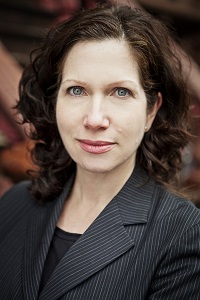De Amerikaanse schrijfster en scenariste Maria Keogh Semple werd geboren op 21 mei 1964 in Santa Monica, Californië. Haar familie verhuisde naar Spanje al snel nadat ze was geboren. Daar schreef haar vader, de scenarist Lorenzo Semple, Jr. de pilot voor de tv-serie Batman. Het gezin verhuisde naar Los Angeles en vervolgens naar Aspen, Colorado. Semple bezocht de kostschool Choate Rosemary Hall en behaalde vervolgens in 1986 een BA Engels aan het Barnard College. Haar eerste baan als scenarioschrijfster kreeg zij in 1992, voor de tv-show “Beverly Hills, 90210”. In 1997 werd zij genomineerd voor een Primetime Emmy, voor “Mad About You”. In 2006 en 2007 werd ze genomineerd voor de Guild of America Award een Writer’s, voor “Arrested Development.” Zij is een van de oprichters van Seattle 7 Writers. Semple publiceerde de romans zijn “This One is Mine” (2008), “Where’d You Go, Bernadette” (2012), en “Today will be Different” (2016). “This One is Mine” gaat over een vrouw die alles heeft, een liefdevolle familie en rijkdom, maar haar onvrede brengt haar er toe om gevaarlijke beslissingen te nemen in het streven naar “meer.” “Where’d You Go, Bernadette gaat over een architecte met pleinvrees architect, die worstelt met het leven in Seattle en die vermist raakt net voor een familie-uitstapje naar Antarctica. Het boek stond een jaar op de New York Times bestseller lijst, won de American Library Association Alex Award en werd genomineerd voor de Women’s Prize voor fictie.
Uit: This One Is Mine
“David stood at the sink, a pine forest to his left, the Pacific Ocean to his right, and cursed the morning sun. It beat through the skylight and smashed into the mirror, making it all but impossible to shave without squinting. He had lived in Los Angeles long enough to lose track of the seasons, so it took glancing up at CNBC and seeing live images of people snowshoeing down Madison Avenue for it to register: it was the middle of winter. And he determined that all day, no matter how bad things got, at least he’d be grateful for the weather.
His pool shimmered. Stone Canyon Reservoir shimmered. The ocean shimmered. He cocked his head and flicked his wrist, skipping an imaginary stone from the pool to the reservoir. It split some Westwood high- rises, then landed in the Santa Monica Bay.
He wound up again—this time to clear Catalina—then stopped.
There was a furry . . . brown . . . thing floating in the Jacuzzi. “Honey!” He walked into the bedroom. “There’s something in the Jacuzzi.” He paused, waiting for the daylight in his eyes to fade.
His wife was in bed, her back to him, her hair seeping from under the pillow she’d taken to putting over her head at night. “Ma- ma, Ma- ma.” A squawk erupted from the baby monitor.
There was a cough, then a bleat.
But Violet didn’t move. What was her plan? Who did she think was going to get the baby? Was a standoff really so necessary that Violet would let Dot cry like this? Jesus Christ. David marched by the bed, skirting the rug so his bare heels struck the hardwood.
“Aggh.” Violet pulled the pillow off her head. And there they were, the reason he fell in love with her almost twenty years ago in front of the Murray Hill Cinema: the violets tattooed behind her ear.
David’s dog walker, a friend of Violet’s from Barnard, had set them up. David managed two bands at the time — big ones, but still, only two. He’d been told Violet worked for a legendary theater producer and was the daughter of some obscure intellectual he’d never heard of. The plan was to meet half an hour before Full Metal Jacket. David arrived on time, but the movie had already sold out. He spotted Violet — she had said she’d be the one wearing red plastic sandals — sitting on the sidewalk in the ticket holders’ line, engrossed in the New York Times, and listening to a Walkman. Two movie tickets were tucked under her leg. She wasn’t a knockout, but wasn’t fat either, and had a face you wanted to look into. She turned the page of the business section and folded it, then folded it again. An artsy chick who read the business section? Who was responsible enough to have arrived early and bought tickets?”

Maria Semple (Santa Monica, 21 mei 1964)




